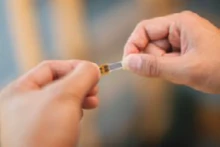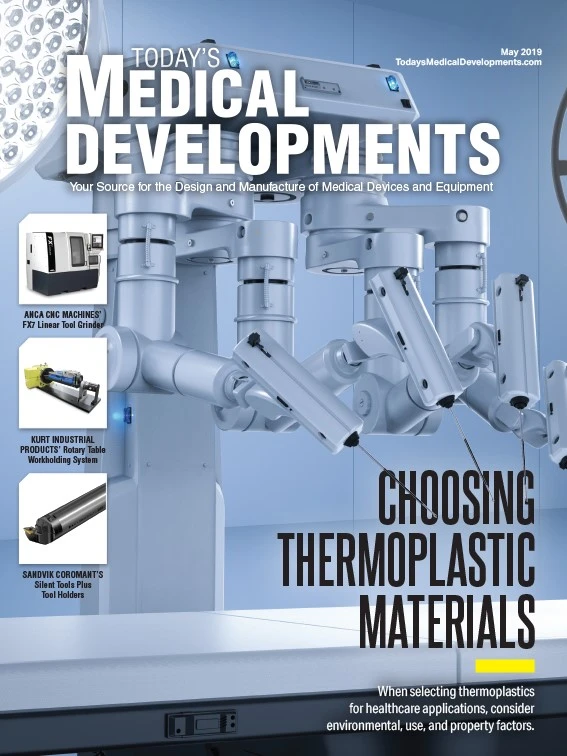
JOSH KIM/UCI

A wearable, disposable respiration monitor that provides continuous high-fidelity readings to help with asthma, cystic fibrosis (CF), and other chronic pulmonary conditions was created by UCI biomedical engineers using the popular children’s toy Shrinky Dinks. The small, bandage-like devices are placed in two positions – one between the ninth and 10th ribs, the other on the abdomen – tracking the rate and volume of the wearer’s respiration by measuring local strain.
The inspiration for the innovation came from University of California, Irvine (UCI) Professor of Biomedical Engineering Michelle Khine after the birth of her son. Complications had him confined to the neonatal intensive care unit hooked up to an array of machines supplying oxygen and monitoring his breathing.
“Despite having his whole tiny body covered in sensors, all the hospital staff could get was respiration rate. If you looked at the vitals monitor, you’d see this waveform, so it looked like they were getting [respiration volume] information, but they weren’t,” Khine says. “I felt so helpless with my child just lying in this box. I wasn’t allowed to carry him for eight days, so it was heartbreaking – but also frustrating to see all of these wires hooked up to him but not giving all the information we wanted.”
Those days in the hospital following the birth of her son were strongly motivating to her.
“I sent some pictures of him all wired up to my students, and said, ‘We have to be able to do better than this. This is 2018. It’s insane.’”

“The current standard of care in respiration monitoring is a pulmonary function test that’s often difficult to perform and limited in terms of the snapshot it provides of a patient’s respiratory health – meaning problems can sometimes be missed,” explains Michael Chu, UCI graduate student researcher in biomedical engineering and lead author of a paper on the innovation. “Our new stretch sensors allow users to walk around and go about their lives while vital information on the health of their lungs is being collected.”
Researchers applied a very thin layer of metal to a sheet of the plastic toy, then heat-shrank it to cause corrugation. The film was then transferred to a soft, stretchy material that is adhered to the patient. Signals from embedded sensors are transmitted via Bluetooth to a smartphone app.
So far, members of the Khine lab have tested the technology on healthy subjects, with plans for a pilot trial with a small number of asthma sufferers in the coming months.
University of California, Irvine
https://uci.edu

Explore the May 2019 Issue
Check out more from this issue and find your next story to read.
Latest from Today's Medical Developments
- IMTS 2026 runs Sept. 14-19 at McCormick Place in Chicago, Illinois
- Master Bond’s MasterSil 800Med
- ZEISS celebrates 100 years of advancing innovation in the US
- Teleflex sells acute care and urology businesses for $2.03 billion
- HANNOVER MESSE: Where research and manufacturing meet
- What’s next for the design and manufacturing industry in 2026?
- Arcline to sell Medical Manufacturing Technologies to Perimeter Solutions
- Decline in German machine tool orders bottoming out





